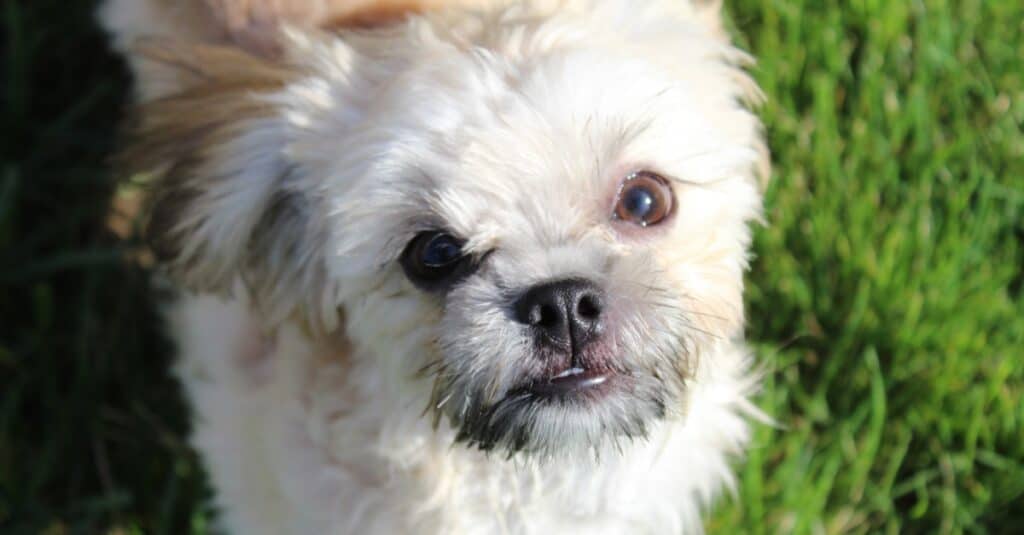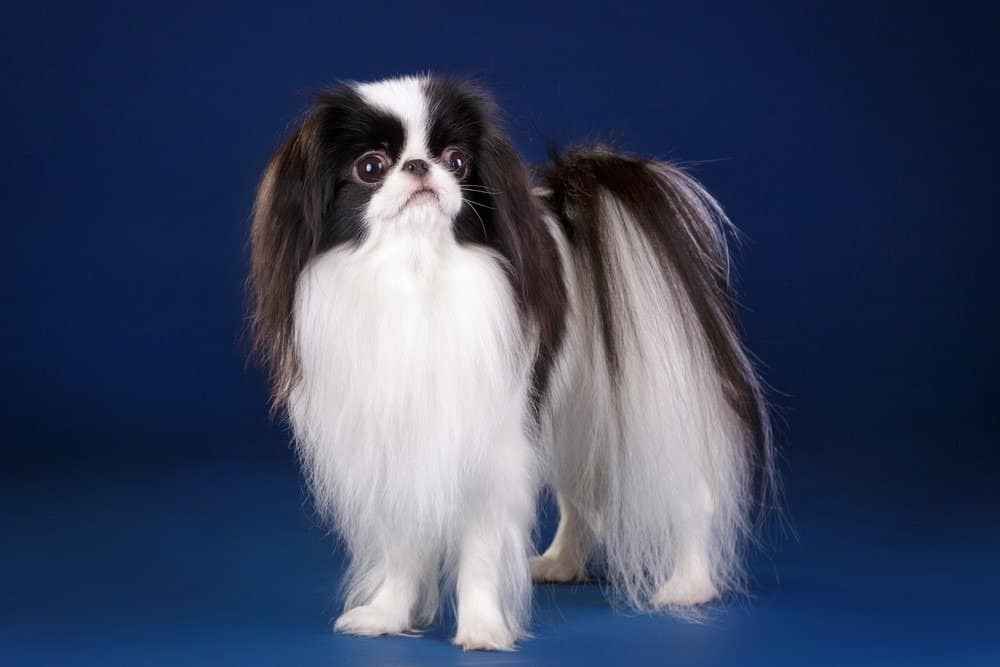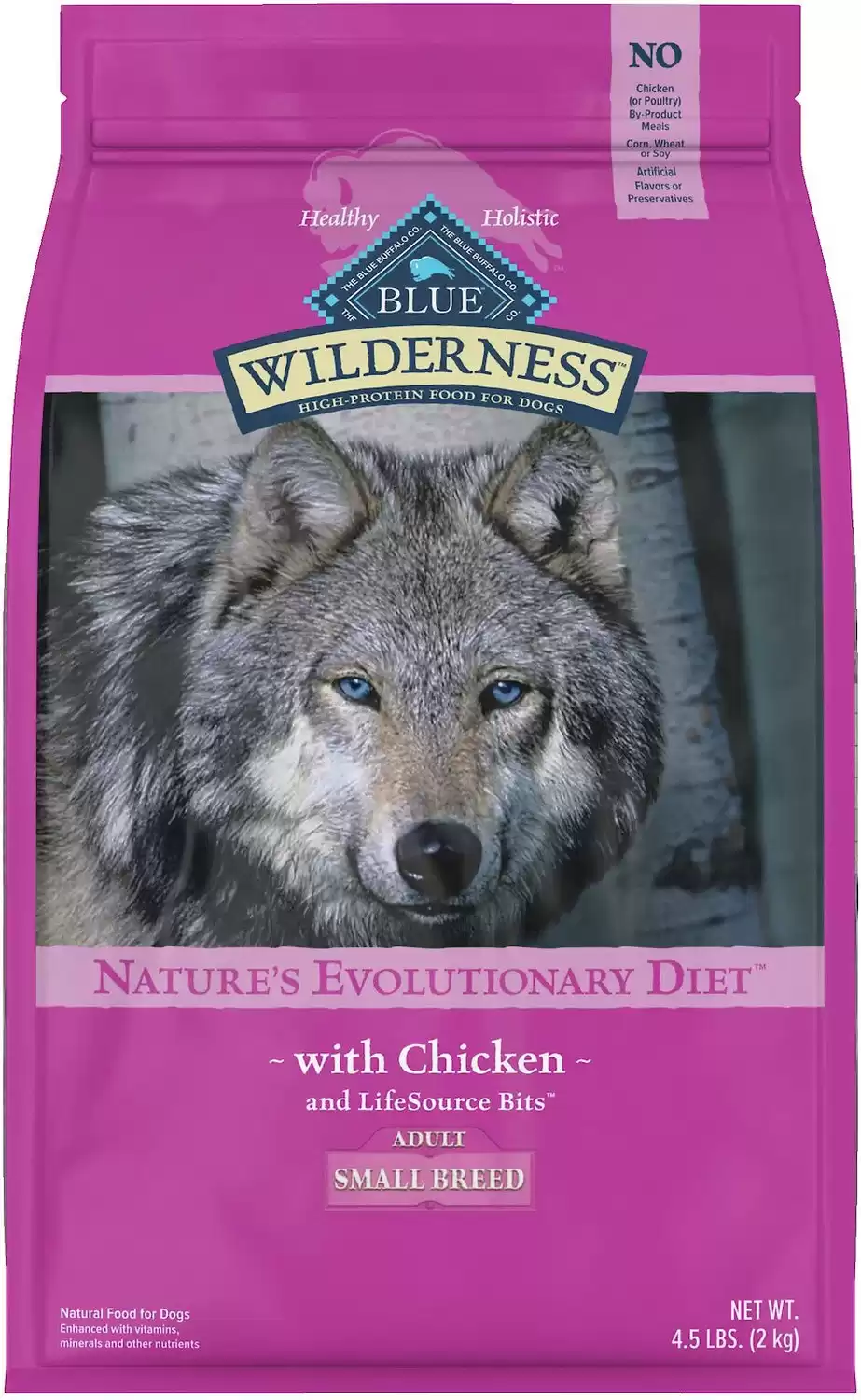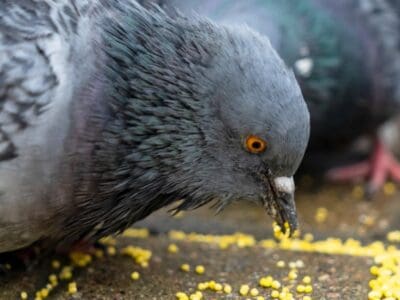Miki
Canis lupus
They can be trained to use the litter box like a cat!
Advertisement
Miki Facts
- Diet
- Omnivore
Miki as a Pet:
- General Health
- Energy Level
- Shedability
- Trainability
- Intelligence
- Tendency to Chew
- Size
- Family and kid friendliness
- Yappiness / Barking
- Moderate
- Hypoallergenic
- Yes
- Separation Anxiety
- Moderate
- Preferred Temperature
- Average climate
- Exercise Needs
- Low
- Friendly With Other Dogs
- Moderate
- Pure bred cost to own
- $1,000 - $3,000
- Dog group
- Toy
- Male weight
- 6-10 lbs
- Female weight
- 6-10 lbs
This post may contain affiliate links to our partners like Chewy, Amazon, and others. Purchasing through these helps us further the A-Z Animals mission to educate about the world's species.
While they’re believed to share ancestry with the Shih Tzu, Yorkshire Terrier, and Japanese Chin, the exact lineage of the Miki isn’t entirely known. It was first introduced by breeder Maureen van Wormer — also known as Mikki Mackin — from Wisconsin.

The toy-sized Miki didn’t come into existence until the 1980s, but this rare breed is a treasured commodity among many dog owners. Their small size belies a big personality and an oversized affection for humans of any stripe. They won’t make the best guard dog, but they’re the perfect choice as a family dog or a therapy dog — and their petite stature and low energy levels mean that they can be perfectly comfortable in a small apartment. Available in a variety of different colors — including black, mahogany, blue, and beige — they can often get mistaken for a dog that’s more of a fashion accessory than a companion.
See all of our expert product reviews.
That would be a mistake. These dogs are highly intelligent, emotionally aware, and eager to have a purpose. In fact, their personalities have been frequently compared to a domestic house cat.
3 pros and cons of owning a Miki
There’s no perfect dog for everyone because everyone has different needs, so let us help you figure out if a Miki is the right match for your household.
| Pros! | Cons! |
|---|---|
| Get along well with children and other pets | A rare breed that’s difficult to find and carries an expensive price from breeders |
| Long lifespan and relatively few health issues | Prone to separation anxiety when left alone for long periods |
| Low energy and capable of living in smaller homes | Has a reputation for being picky eaters |

Mikis can either have smooth or long coats.
©MyPark110 / CC BY-SA 4.0 – License
Origin
Unlike most breeds of dogs, the Miki came about due to the efforts of one single breeder: Mikki Mackin of Madison Wisconsin. This dog’s namesake and progenitor was striving to develop a small dog with long hair and a relaxing demeanor. Mackin used her experience breeding Shih Tzus to perfect her techniques and combined Palpillion, Maltese, Yorkshire Terrier, and Japanese Chin to the aforementioned breed to produce the first Mikis. Unfortunately, the exact proportions of each breed she used in her initial litters are unknown, so all purebred Mikis today descend from ancestors raised by Mackin herself in the 1980s.
Health and Entertainment for your Miki
See all of our expert product reviews.
Size and Weight
As a toy breed, Miki is one of the smallest dogs around. If you’re looking for a dog that you can carry with you or one that can live comfortably in a smaller apartment, a Miki might be the right breed for you. The average Miki stands just under a foot tall and weighs as much as 10 pounds.
| Male (height) | 11″ tall |
| Female (height) | 11″ tall |
| Male (weight) | 10lbs |
| Female (weight) | 10lbs |
Common Health Issues

It’s important to take your miki to the vet regularly for check-ups.
©MonicaChadwick/Shutterstock.com
Mikis are cute dogs, but the same unique characteristics that have been bred to make them cute can also contribute to specific health risks. Their short muzzles are a particular issue. Respiratory issues are common in this breed and can take the form of snoring, difficulty breathing, or swallowing. This is standard in toy-sized dogs like the pomeranian and in snub-nosed dogs like the English bulldog — but it can also lead to inactivity and eventual obesity. In case of serious respiratory issues, a veterinarian may recommend the removal of fluid from the lungs.
Another common characteristic this dog shares with other toy-sized breeds is its small mouth. You’ll need to brush their teeth more regularly than the average canine, and it can be beneficial to make sure that they have healthy and size-appropriate bones to chew on. This breed is generally healthy as far as purebreds go, but you should keep out an eye for a couple of issues that are common among all breeds. Patellar luxation — or a dislocated kneecap — is relatively common. They may also be threatened by hypothyroidism and eyelash issues.
Look out for these conditions when caring for a Miki:
- Respiratory issues
- Dental issues
- Patellar luxation
- Hypothyroidism
- Eyelash conditions
Temperament

Mikis are extremely attached to their owners.
©focus.n.develop/Shutterstock.com
Mikis adore people — and while they’re prone to building special bonds with their caregivers, they’re friendly and welcoming to just about everyone. Despite that, they don’t have a hyperactive temperament. These dogs love to play, but they’re fundamentally gentle dogs that love to cuddle.
The personality of these dogs has often been compared to that of cats, but don’t take that to mean that they can be left alone all day. These dogs are capable of living in small apartments, but they’re prone to separation anxiety when left alone for too long. Fortunately, this is an issue that can be taken care of effectively with the proper training. They’re also smart dogs who can look beyond black-and-white thinking and apply their cunning to problem-solving.
How To Take Care of Miki
This breed largely abides by the same care standards as other toy breeds like the Shih Tzu or Maltese, but they also have their own unique eccentricities. Here’s everything you need to know about caring for a Miki from the moment you get them for adoption.
The Best Dog Food for Mikis

Blue Buffalo is the best kind of dry dog food for Mikis.
©cleanpng.com – License
Miki has the same nutritional standards as other toy dogs. Their diet should consist of high-quality and nutritional food appropriate for their age. Respiratory issues can sometimes make it hard for Miki to feed, and toy breeds sometimes have issues with chewing kibble. There is food that’s specially formulated for the needs of toy dogs, but it’s not a necessity unless you’re noticing a negative impact from the current diet.
Miki is sometimes prone to excessive weight gain, and that’s especially true in those who don’t get a lot of exercise. This can become a compounding issue if they live in a small apartment or have trouble staying active because of respiratory issues. Make sure to portion out their food and ensure that less than 10% of their dietary intake consists of treats. Miki can be picky eaters, but finding food that’s small and easily digestible can help rescue them from unhealthy obesity.
Quality food with plenty of protein can help keep off extra weight by better satiating your Miki.
That’s why A-Z Animals’ suggestion for Mikis is Blue Buffalo Wilderness High Protein, Natural Adult Small Breed Dry Dog Food.
Rather than fillers with abundant, empty calories, this small breed dog food has 36% protein with amble fiber so your Miki will know when it’s full. What’s more, this food provides your Miki with calcium for strong bones and joints, omega-6, and 3 fatty acids that benefit the skin and coat and beyond.
Follow this link below to try out Blue Buffalo Wilderness High Protein Natural Small Breed Dog Food on Chewy or Amazon.
- Deboned chicken, chicken and fish meal recipe with peas, sweet potatoes, and potatoes
- Antioxidants from fruit for immune health
- Promotes muscle development, high energy, and joint health
- Omega 3 and 6 fatty acids for healthy skin and coat
Maintenance And Grooming
Whether they’re black, white, or tan, Miki has beautiful and lustrous coats. Fortunately, they’re not prone to shedding and don’t require exhaustive grooming. Breeders suggest regular brushing to remove dead hair and skin and prevent tangles. These dogs only need to be bathed occasionally, but be sure to use conditioner to rescue them from the risk of tangles and make future grooming easier.
Mikis need to have their ears cleaned and their nails trimmed as much as the average dog, but special care needs to be given to their teeth. Combine regular teeth cleanings at home with scheduled visits to a professional. Bones and toys designed to promote dental health are a recommended part of their ordinary routine.
Training
Many smarter dogs have a tendency to stubbornly resist training, but Miki is fortunate to combine razor-sharp intelligence with a sweet desire to please. They take to training quickly and tend to learn the fundamentals of obedience quickly. But continued training will help keep their minds engaged and their bodies healthy. The bar for teaching them tricks or even disciplines like agility training is very high. Mi-ki can be effectively trained to use a litter box as well.
Proper socialization should be a part of a Miki’s training from early on, and it should continue throughout their life. Mikis are friendly dogs, but they may need to learn how to interact in crowded environments. Socialization can help with that, and it can also keep them properly stimulated and happy.
Exercise
Mikis are active dogs, but they don’t require caretakers who are particularly active. That makes them a great choice for people with mobility issues and those who live in smaller spaces. Miki can benefit from 30 minutes of walking a day, and they can benefit from having a yard to run in. But they can stay engaged and active with other activities as well. They require mental as well as physical exercise. Puzzle toys can do a good job of keeping them engaged. Additionally, their demeanor and intelligence make them viable choices for competitive activities — notably agility or competitive obedience.
Puppies
Puppies of this breed don’t have any unusual needs apart from the ones you should keep in mind for most toy breeds. While they’re very friendly, their small size can sometimes lead to them having a complex with larger dogs. Making sure that they’re socialized from an early age can make a world of difference if you want them to be able to get along well in the larger world. This is especially true if you’re introducing them to a home that already has other animals. Introducing them to both humans and other animals will reduce the risk of anxiety and obedience issues as they get older.

It is important to socialize mikis while they’re still puppies.
©focus.n.develop/Shutterstock.com
Miki And Children
These dogs are universally kind and friendly, and that trait extends to their relationship with children as well. As long as kids understand how to interact with the dog without hurting them, the new dog in your home should get along well with them. As smaller and gentler animals, even younger children should be able to play with them without hurting either themselves or the dog in the process.
Similar Breeds

Japanese Chin are one of the dogs originally used to breed the miki.
©Natalia Fedosova/Shutterstock.com
When Mikki Mackin originally bred the Miki, it was through a wide combination of different breeds. And while the actual lineage for the species has been lost, DNA testing has demonstrated that they’re bred from a hodge-podge of different sources — although Asian toy breeds dominate their ancestry. They most resemble the Maltese, Japanese Chin, and Papillon.
- Maltese – Maltese have lived pampered lives as the lap-dogs for the wealthy and powerful for thousands of years, and they continue to have the personality of little divas. Friendly and active, they also can serve as effective watchdogs.
- Papillon – The Papillon is as friendly and affectionate as the Miki, but this breed tends to be significantly more active as well. They can fulfill similar roles in the household, but a Papillon will require a significantly greater expenditure of time and energy. That also makes them an exceptional breed for agility training.
- Japanese Chin – The luxurious coat of the Japanese Chin is rather similar to that of the Miki, and they also share a similar feline sense of grace and personality. But these toy dogs have an independent streak that’s not shared by the Miki.
Popular Names
Some popular names for the Miki include:
- Charlie
- Scout
- Milo
- Bella
- Daisy
- Zoe
Miki FAQs (Frequently Asked Questions)
What is a Miki dog?
Miki is a toy breed that can appear in a number of colors ranging from black to white to mahogany. Their gentle personalities and sweet friendliness make them a popular choice for therapy and service dogs.
How much does a Miki dog cost?
Adoption of puppies from a breeder can cost anywhere from $1,000 to $2,000. As a rare breed, prices for adoption can fluctuate pretty widely. If you’re not looking to go directly through breeders, there are some rescue organizations for this breed.
Do Miki dogs shed?
This breed rarely sheds, and their coats are hypoallergenic.
How big do Miki dogs get?
This toy breed rarely reaches a full foot in height, and they tend to top out at a weight of 10 pounds. They’re an appropriate choice for smaller apartments in the city.
How long does a Miki live?
This breed is relatively long-lived for a dog. You can expect an average lifespan of 13 to 15 years.
Thank you for reading! Have some feedback for us? Contact the AZ Animals editorial team.
Sources
- PetGuide, Available here: https://www.petguide.com/breeds/dog/miki-dog/
- kidadl, Available here: https://kidadl.com/animal-facts/miki-dog-facts
- Dog Breed Info, Available here: https://www.dogbreedinfo.com/miki.htm
- Rare Breed Mi-Ki Dogs, Available here: http://www.rarebreedmi-kidogs.com/health-issues-need-aware-get-miki-dog/
- American Kennel Club, Available here: https://www.akc.org/expert-advice/dog-breeds/care-toy-breeds-extra-small/



















